
Many dealers and collectors were worried about what influence the pandemic would have on the coins, banknotes and medals market. The dealers were worried that the market would disappear and they had to find another profession. The collectors were worried their collections would lose their value. Genuine collectors, also mentioned as numismatists, collect for the history, production techniques, or for some other reason. But most of all is their love and passion for numismatics. They also look at their collection as an investment. Some collectors pay fortunes for their precious coins, banknotes and medals.
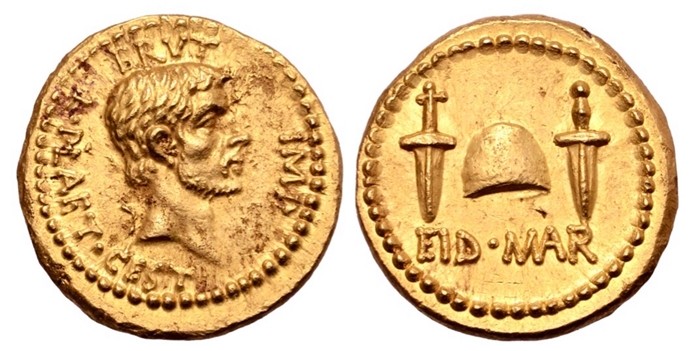
Recently someone paid GBP 2,700,000, about THB 108,000,000, plus commission, for a Brutus Aureus believed to be struck in late summer-autumn of 42 B.C. by a military mint travelling with Brutus in the East. The 8.06 gram, 19 mm, gold coin is one of only three known in existence. Speculations were that the coin could sell for more, but coins in this price range have a limited number of buyers. Roma Numismatics in London sold the coin.
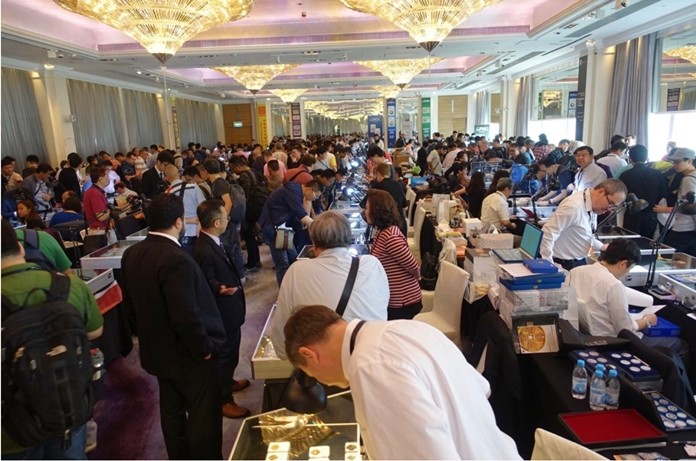
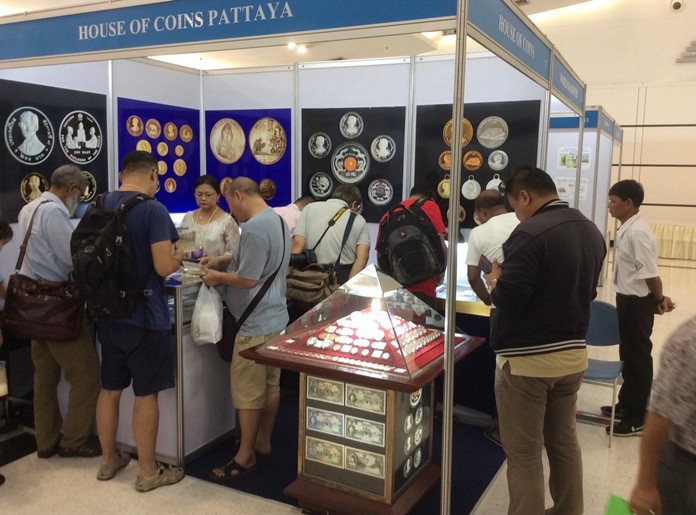 During the pandemic several records were set for coins, banknotes and medals from all over the world. The reason might be that collectors have more time to look into their collections and discover what is missing. Auction companies conducting their sales behind closed doors have given collectors more options to bid.
During the pandemic several records were set for coins, banknotes and medals from all over the world. The reason might be that collectors have more time to look into their collections and discover what is missing. Auction companies conducting their sales behind closed doors have given collectors more options to bid.
Live bidding is poplar and several auction companies are very professional giving buyers the option of following the auction live and putting in their bids from wherever they might be at the time of the sale. By doing so, more bidders around the world are joining the online auction, thus setting new price records.
I am looking forward to when restrictions on international travel are lifted and auctions are allowed to be conducted with open doors again, so I can meet my fellow collectors and dealers at auctions which are often conducted at the time of a major coin show.
The Hong Kong Coin Show had to cancel several shows in 2020 because of the pandemic. The 8th show is planned from April 9 until April 11 2021. The Numismatic Association of Thailand’s annual International Coin Show is scheduled to take place at the Ambassador Hotel in Bangkok on 27-28 February next year.
The Eur-Seree auction company is scheduled to conduct their 57th sale on 6 and 7 December 2020. This will be conducted with open doors where stamps, arts, antiques, watches, coins, banknotes and medals will also be on sale.
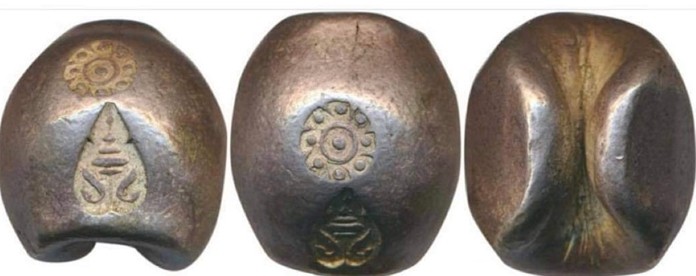
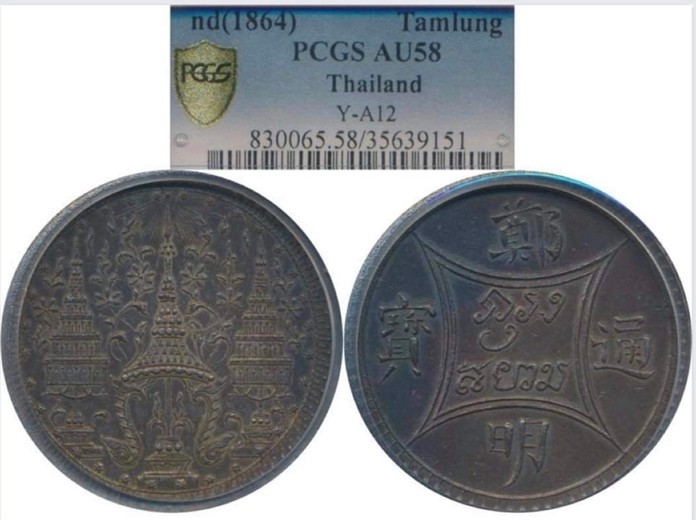
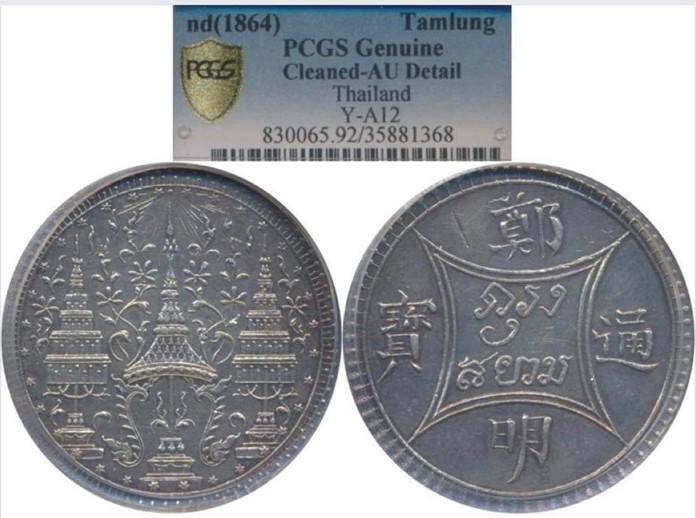
Pod Duang, Bullet Coins, are interesting coins and were one of the most important forms of payment in Thailand for more than 600 years. They were introduced into the Siamese economy during the Sukhothai period and could be exchanged for flat coins and banknotes until 1908.
In the Eur-Seree auction there is a beautiful 4 Baht, Tamlung, weighing 60.61 grams with a starting price of Baht 90,000. The coin was produced during the reign of King Mongkut, Rama IV (1851-1868) and has the Mongkut face-mark and the Chakra top mark. According to the weight, this is actually a broad-thaler or a double-thaler.
During the reign of King Rama IV, a flat coin of 4 Baht, Tamlung, was struck to commemorate the King’s 60th Birthday. It was struck in both gold and silver weighing about 60.77 grams. These coins were also permitted to be used as decorations. In the auction, a silver 4 Baht ND (1864) graded by Professional Coin Grading Services, PCGS, to be AU58, is on offer. AU stands for Almost Uncirculated and coins are graded from 1 to 70, 70 being the best. The coin looks very nice and does have a nice toning and should sell for more than the 500,000 Baht as the starting price. Another example in the same auction is graded by PCGS as Cleaned – AU details.
It is surprising that the scratch on the reverse is not mentioned by the grading company. Here the starting price is 400,000 Baht. Many ask if the 4 Baht King Rama IV coin is rare. A few years ago, a well-known collector said, “Actually it is not that rare. I believe that all of the 100 serious collectors of Thai coins have one.” This is probably true, but it is a coin collected internationally, so there are still many who need it in their collection.
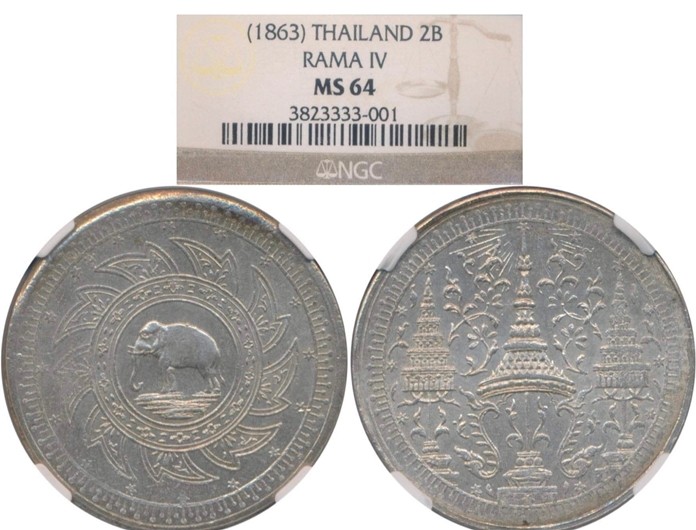
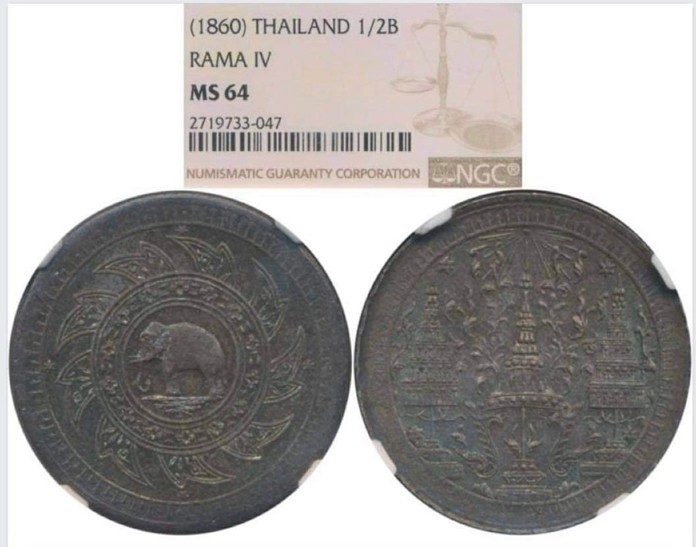
During the reign of King Rama IV, a series of five coins were issued with no dates (1860), from 1 Baht to 1/16 Baht. A 2 Baht was added to the series, also with ND around 1863. The coins were struck in gold and silver, and the gold coins are much rarer than the silver coins.
On the obverse of the coin is the crown with rays flanked by Umbrellas with tree branches in the background and stars around the border to indicate the denomination. On the reverse is the elephant in the Chakra device with the stars around the border to indicate the denomination. Each star represents One Fuang or 1/8 Baht.
To find the silver coins in good condition is difficult as they were popular and have been circulated for years. In the sale there is a 2 Baht graded by Numismatic Guaranty Corporation, NGC, to be MS64. The coin has very nice toning. The starting price is 150,000 Baht. In Eur-Seree’s last sale a 2 Baht graded by PCGS to be MS64 sold for 220,000 Baht which I found to be quite reasonable. Many stated after the sale that they regretted not buying it. A ½ Baht in the same series graded by NGC to be MS64 has a starting price of 40,000 Baht. It’s difficult to find in this high grade even if the1/2 Baht turns up in a nice grade from time to time. In the last sale, one graded by NGC to be MS63 sold for 19,000 Baht.
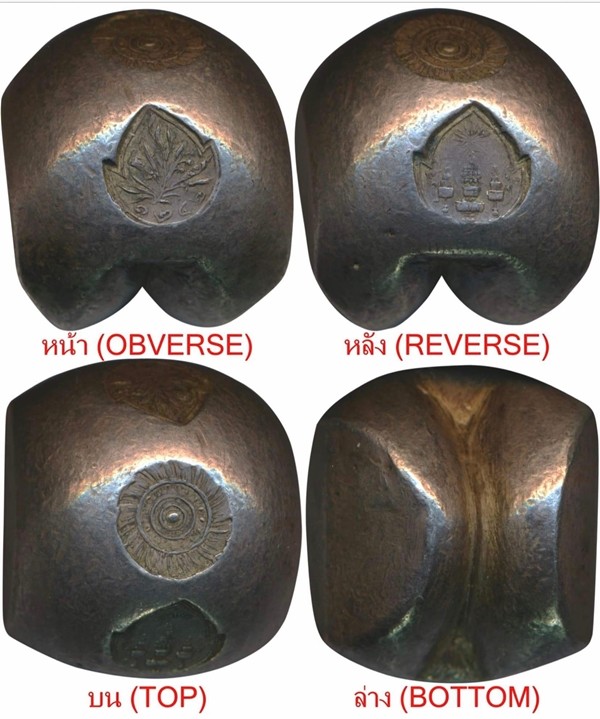 A series of Bullet coins was produced during the reign of King Rama V, 2 -, 4-, 10-, 20-, 40- and 80 Baht. The 2 Baht weighed 30.80 grams and the 80 Baht weighed from 1,185 to 1,232 grams. The coins were produced in 1880 to commemorate the anniversary of the death of Somdej Phra Sirintramat, the mother of King Rama V. On the 40- and 80 Baht coins, the marks were hand-engraved, while on the smaller denominations the marks were die-punched. In the sale there is a 10 Baht with the weight of 153.10 grams. The starting price for this interesting coin is 300,000 Baht.
A series of Bullet coins was produced during the reign of King Rama V, 2 -, 4-, 10-, 20-, 40- and 80 Baht. The 2 Baht weighed 30.80 grams and the 80 Baht weighed from 1,185 to 1,232 grams. The coins were produced in 1880 to commemorate the anniversary of the death of Somdej Phra Sirintramat, the mother of King Rama V. On the 40- and 80 Baht coins, the marks were hand-engraved, while on the smaller denominations the marks were die-punched. In the sale there is a 10 Baht with the weight of 153.10 grams. The starting price for this interesting coin is 300,000 Baht.
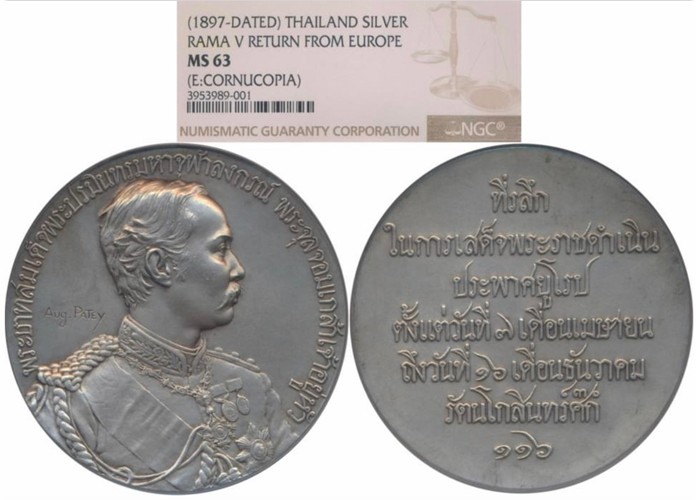
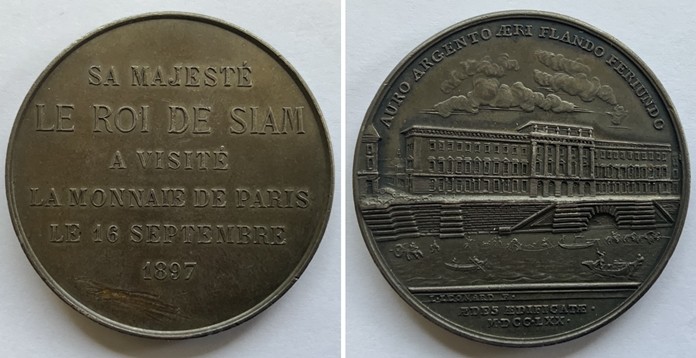
In 1897 King Chulalongkorn, Rama V, made a journey to Europe. During the King’s stay in France he paid a visit to the French Mint, Monnaie de Paris, on 16 September. At the French Mint, King Chulalongkorn sat for Chief Engraver Henri Auguste Jules Patey, who was able to complete the portrait after just one sitting. A proof medal was presented to the King who approved it. On the obverse the portrait of the King faces to the left with his name on the edge and the engraver’s name, Aug. Patey, above the King’s right shoulder. On the reverse the inscription in Thai is, “To Commemorate the Royal Tour of Europe from April 7 to December 16, Rattanakosin Era 116.” The medal was struck in 50 mm diameter. In the sale there is a very nice example graded by NGC to be MS63 with a starting price of 180,000 Baht. In the last auction, another example of the medal graded by PCGS to be SP58 sold for 140,000 Baht.
In this sale there is another important medal that has probably never before been offered in an auction, commemorating King Chulalongkorn’s visit to the French Mint. It is a silver medal produced in a very limited number struck in bronze and silver. On the obverse is the building of Monnaie de Paris and on the reverse the text: “SA MAJESTE LE ROY DE SIAM A VISITE LA MONNAIE DE PARIS LE 16 SEPTEMBRE 1897.” (His Majesty the King of Siam visited Monnaie de Paris 16th September 1897.) The medal was presented to the King and his entourage to commemorate their visit to the Mint. The medal is in very nice condition and was in the collection of the well-known late Australian Numismatist James (Jim) Noble who sold it some 40 years ago. The starting price is 220,000 Baht.
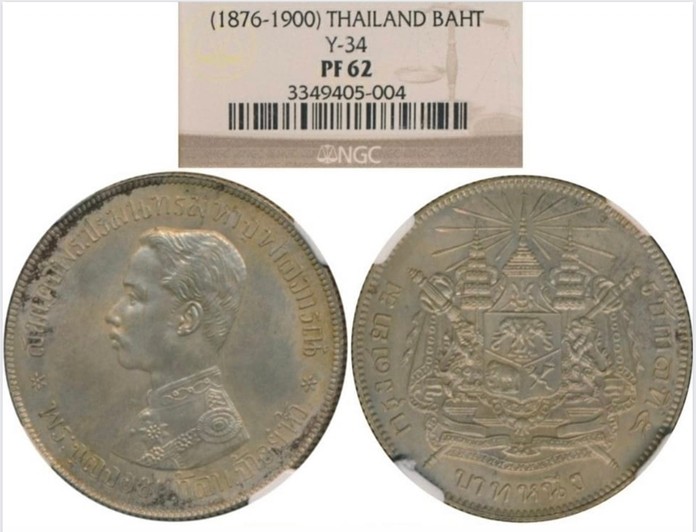
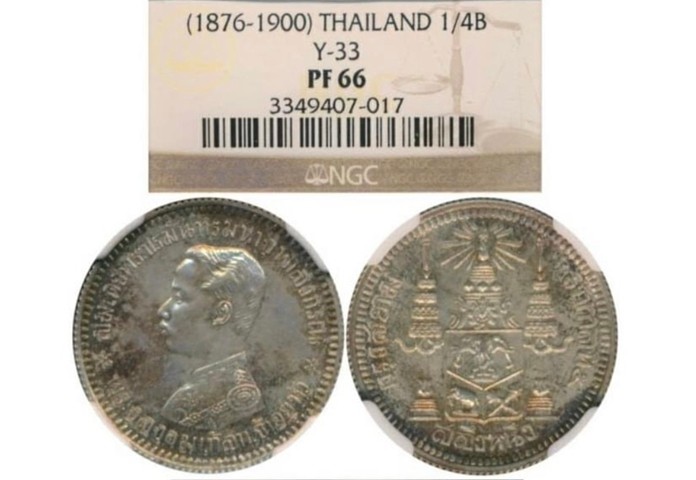
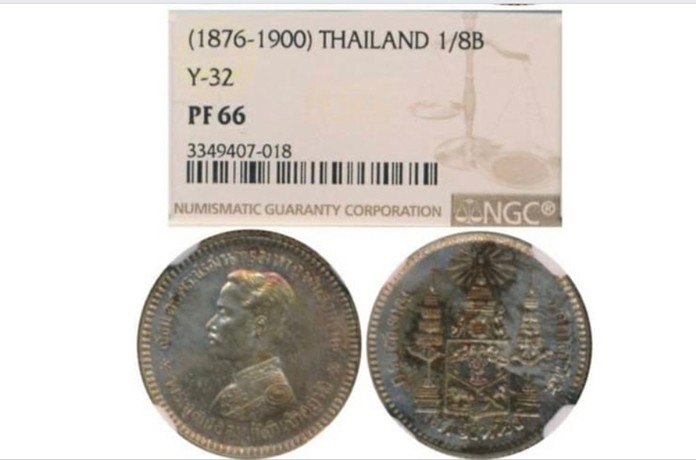
A series of 1-, ¼ and 1/8 Baht coins was produced with the portrait of King Chulalongkorn, Rama V on the obverse and the State Coat-of-Arms on the reverse. Some of the undated coins (1876-1900) were produced in proof. In the sale is a set. The coins are graded by NGC; the 1 Baht PF62, the 1/4- and 1/8 baht are both graded to be PF66. This popular set has a starting price of 450,000 Baht but is likely to be sold for more.
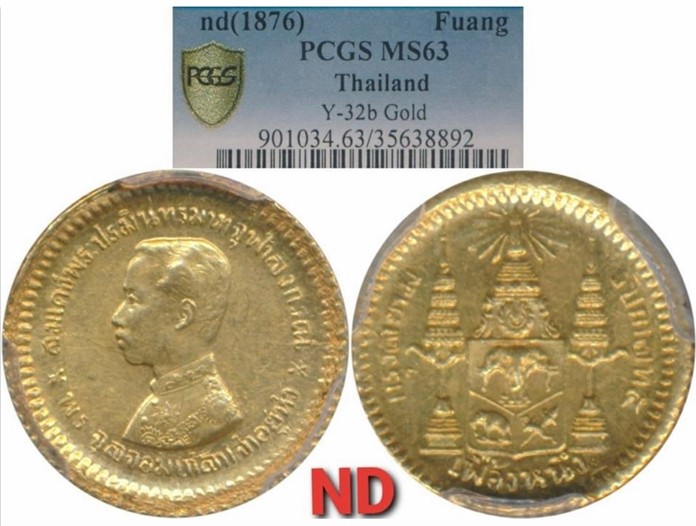
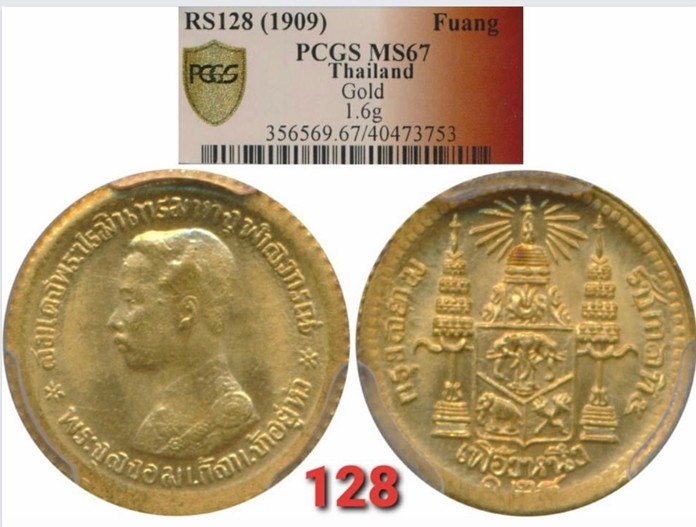
The 1/8 Baht, Fuang, with the portrait of King Rama V on the obverse and the State Coat-of-Arms on the reverse was not only struck in silver but also in gold. With ND (1876-1900), they are offered for sale quite often. In the auction, a nice coin graded by PCGS to be MS63 has a starting price of 100,000 Baht. Another 1/8 Baht with the date RS128 (1909) is not only a very rare coin, but the one offered in the sale is also in an incredible grade, PCGS MS67. The starting price is 400,000 Baht. I am sure this rarity will find a new home at this price or maybe even higher.
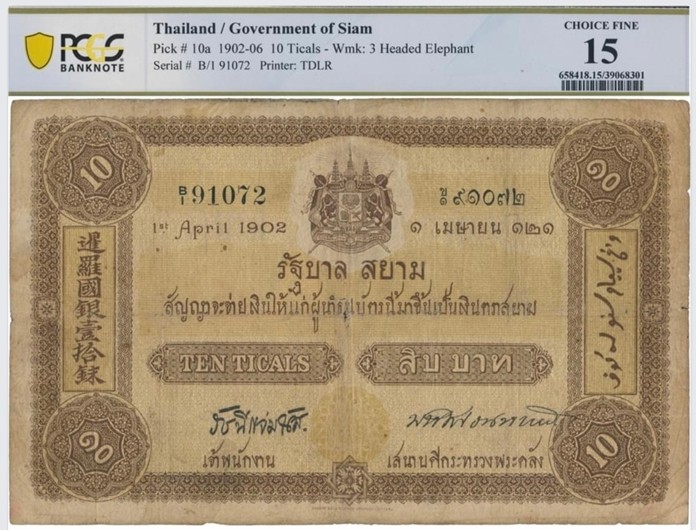
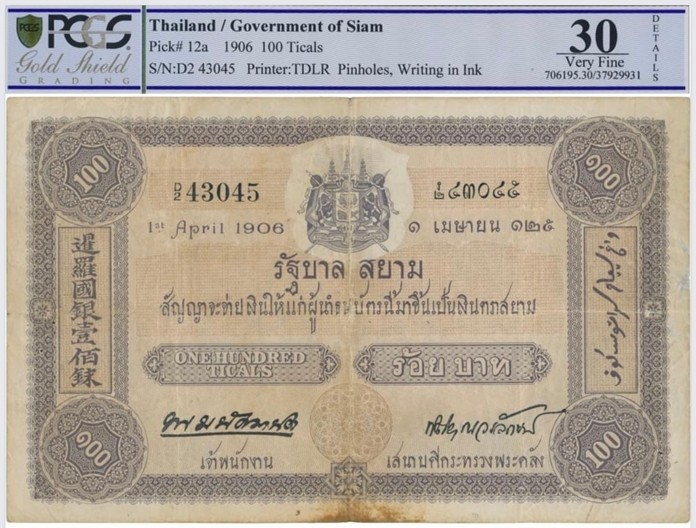
In the banknote section there are two very interesting banknotes from the First Series. A 10 Baht banknote dated 1 April 1902, the very first date for Thai Banknotes, with the prefix A/1 and the number 91072. It is graded by PCGS to be Choice Fine 15 and has a starting price of 100,000 Baht. The price in Mr Somchai’s catalogue of Thai Banknotes, it is estimated in Fine to have a value of 240,000 Baht. Some years ago, a 10 Baht with a better grade and the same date and prefix sold for 800,000 Baht. The number was 00001, the very first Thai 10 Baht banknote, actually a museum piece.
A 100 Baht in the sale, dated 1 April 1906, Type II, graded by PCGS as Very Fine 30, also has a starting price of 100,000 Baht. In Mr Somchai’s catalogue it is valued in Fine at 220,000 Baht and in Extremely Fine at 400,000 Baht. In my opinion, I do not agree with PCGS in the grading. I think we are stricter in Thailand and that Mr Somchai’s prices are based on nicer banknotes. This is the same thing in many European countries where the grading is stricter than in the US where the grading companies are established.
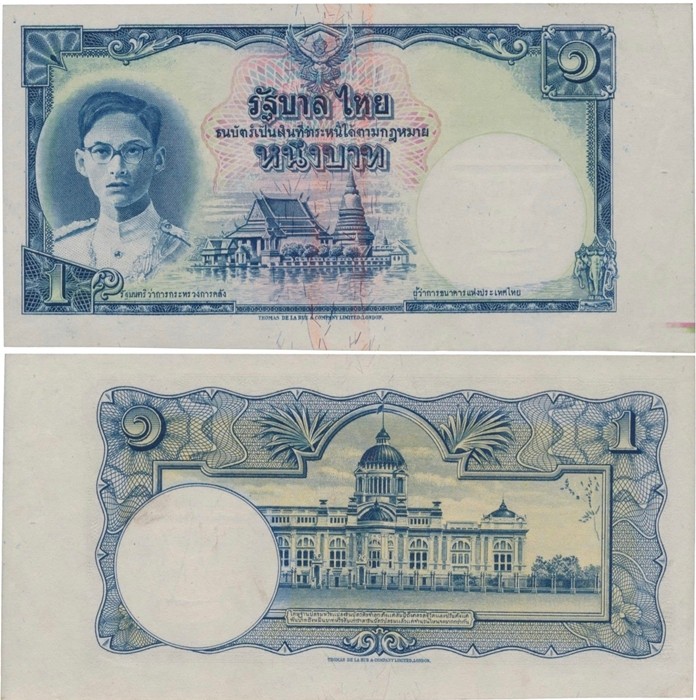
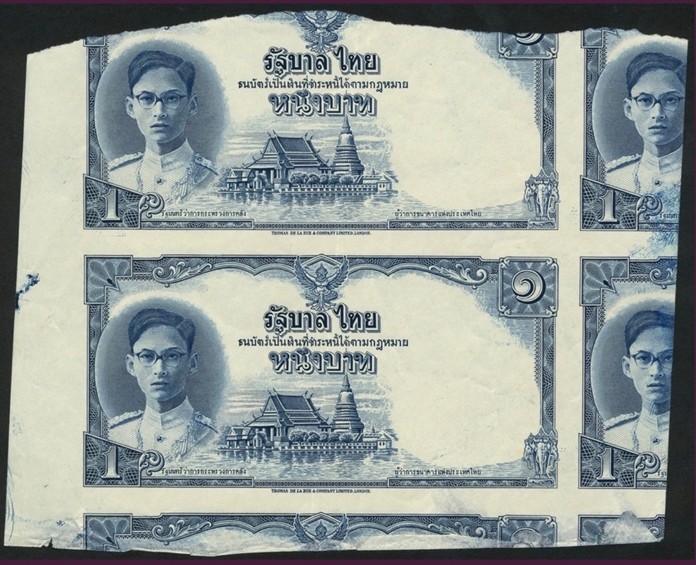
A ‘remainder’ banknote is a banknote prepared for issue but not issued for some reason. In the sale there is a ‘remainder’ 1 Baht banknote Ninth Series, Type I or II, missing the prefix, number and signatures. The difference between Type I and II is that the prefix and number on Type I was printed in red, while on Type II it was printed in black. This ‘remainder’ has a starting price of Baht 120,000.
A one-sided uncut uniface progressive proof 1 baht unevenly cut, with one complete note was sold by Spink, London some years ago for GBP 1,700. The estimate was only GBP 100-150. These notes should not be called specimen notes, but a ‘remainder’ and an uncut sheet. Specimen notes did have another function. It will be interesting to see whether the ‘remainder’ draws any interest in the auction.
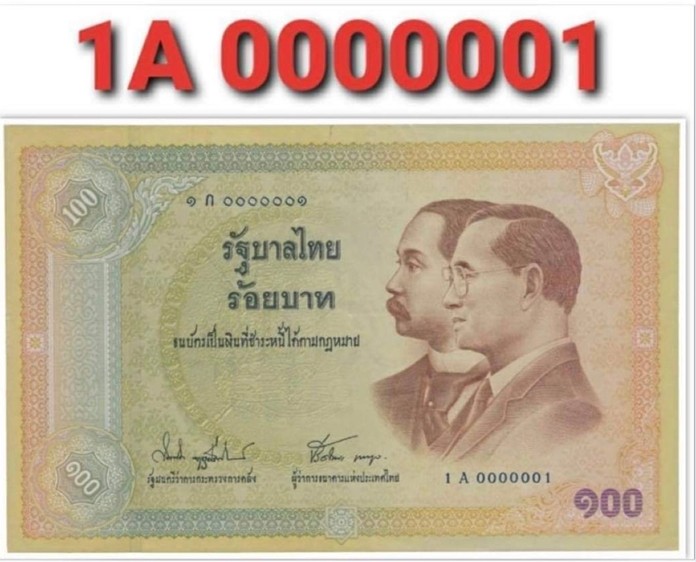
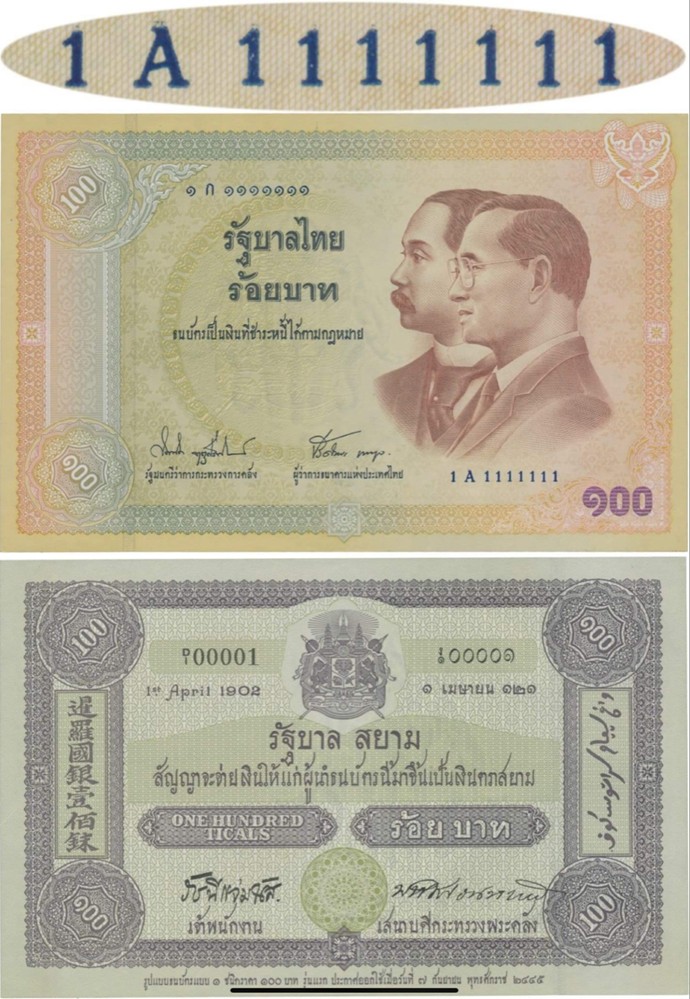
In the last Eur-Seree sale held on 30 August, there was a section with Banknotes with Solid and Lucky Numbers. This was a great success with many record prices. This time, several Baht Banknotes are offered commemorating the Centenary of Thai Banknotes in 2002.
The banknote was issued in 15 million pieces. The obverse shows the portraits of King Chulalongkorn, Rama V, and King Bhumibol Adulyadej, Rama IX. The reverse shows the very first Thai 100 Baht note First Series, with the prefix D/1 and the number 00001. It shows the date 1 April 1902, the very first date Thai Banknotes were issued.
Several people told me they have a very rare 100 Baht banknote from 1902 in their possession. It takes some time to explain that it is actually from 2002 not 1902. They believe me when they realise that even though Rama IX ruled for many years, he could not have been the King in 1902. In the sale there are several of these banknotes, one with the 1/A and the number 0000001, starting price 200,000 Baht. Another with the same prefix 1/A and the number 1111111 has a starting price of 250,000 Baht. Personally, I would think that the one with A/1 and 0000001 would be more expensive as it is the first note in the 1/A series. This is correct, but it is not the first note of this type as the type started with prefix 0/A; the very first note of this type would be with prefix 0/A 0000001.
In the sale there are several other great coins and banknotes; among them are some Chinese coins. Lately Chinese coins have been sold for new records and I will definitely be following them. The online catalogue is available on www.eurseree.com and printed catalogues can be ordered for 1,500 Baht from: e-mail <[email protected]>
 |
 |
 |





